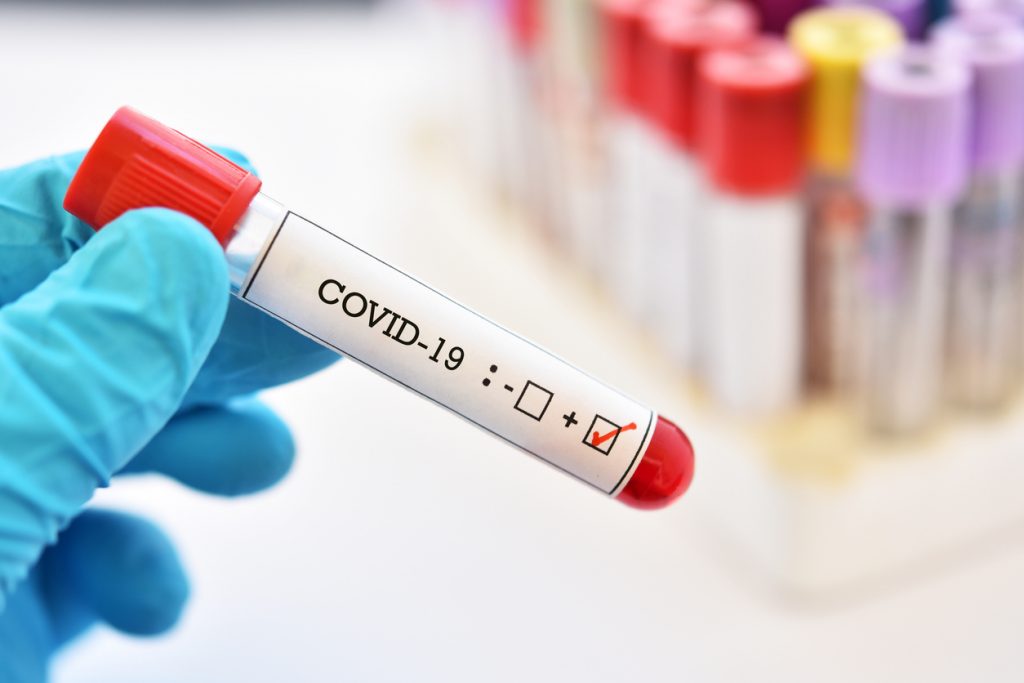This post is the third entry in our series on AI application patterns across multiple industries.
In this post, we will discuss how predictive analytics and decision support technology can be used to create intelligent predictive models.
How Artificial Intelligence Fits with Big Data and Utilizes It
According to CB Insights, thirty companies that leveraged artificial intelligence (AI) for their core business in 2018 increased their valuation to $1 billion or more. These businesses—or unicorn AI companies—have built solutions that are helping to improve several AI application areas, including robotics, cybersecurity, autonomous vehicles, and healthcare.
So, what is it that makes these companies stand out from other businesses using or implementing AI? They have mastered the intersection at which AI meets Big Data. The process of driving business value from data and analytics capabilities in the future will be shaped largely by the convergence of AI and Big Data.
Companies that intelligently combine their AI capabilities with their Big Data will be the ones to come up with differentiated solutions that give them a massive edge in the market. These are the companies that would have mastered the art and science of changing Big Data into predictive intelligence.
AI and Big Data have a reciprocal relationship. This means that artificial intelligence (AI) is heavily reliant on Big Data for success. On the other hand, if used appropriately, AI capabilities can help any organization to get maximum value from its data store, which was previously cumbersome or impossible.
The convergence of AI and Big Data may create new requirements for data preparation, infrastructure, governance, etc.; however, in most cases, the combination of the two would help to minimize or overcome these operational complexities. Therefore, there is tremendous value in combining AI and Big Data for predictive analytics and decision support.
The Intelligent Predictive Models that Machine Learning Algorithms are Helping to Create
The importance of using AI to make sense of data cannot be emphasized enough. This is because the volume of data being generated today is ‘far too much’ for the human mind to comprehend it meaningfully. In other words, the human brain is not hard-wired to meaningfully analyze the massive datasets that we have today.
Luckily, techniques such as predictive analytics, machine learning, and data visualization are available to overcome this problem; these techniques allow us to dig deeper into large datasets to extract valuable insights and improve the accuracy as well as the speed of decision-making. Ultimately, this drives value creation and enables the future growth of an organization.
In other words, predictive intelligence and decision support enabled by the convergence of AI and Big Data can be the difference between the success and failure of your organization. To help you better understand this, below is three intelligent predictive models that machine learning algorithms are helping to create.
1. Forecasting
Good forecasting is essential to growing your business. For years, organizations had relied on human instinct—such as gut feelings—to make predictions about the future. 8 out of 10 times, this has had a negative impact on the company. Fortunately, organizations no longer need to rely on the human instinct to make decisions about the future; we can now use information and insights from intelligent systems to make those decisions.
Not only is the convergence of AI and Big Data improving how organizations work, but it is also improving their forecasting ability. A fundamental aspect of management, forecasting helps to estimate future events. There are two main purposes of forecasting: minimizing uncertainty and establishing standards for tracking performance. Therefore, by improving the accuracy of forecasts, AI techniques have a positive impact on the bottom line.
In organizations, forecasts are developed to support planning or aid decision-making. AI supports both these processes by organizing and supplying relevant information and insights. The three commonly used AI forecasting systems are:
Neural Nets—They imitate several elements of the human cognitive process, including the ability of the human brain to identify and learn patterns.
Expert Systems—They create a summary of the entire available rules and knowledge. This is obtained by integrating datasets or interviewing experts and is stored in a set of “if-then” rules.
Belief Networks—This is a forecasting system that uses a tree format to describe the database structure. Conditional probabilities for various future outcomes are generated by belief nets to support business decision making.
A real-world example of how AI-based forecasting can improve business operations is Danone, the biggest yogurt manufacturer in the world. After using a machine learning engine to make forecasts, the company experienced a twenty percent decrease in production forecast errors and a thirty percent decrease in lost sales.
2. Predicting Behaviors
With predictive analytics, organizations can know the ‘most likely’ outcome in the future; it is a form of advanced analytics that uses ML algorithms to predict future behavior trends and activity. Organizations can use predictive analytics to analyze data based on current and historical scenarios in order to find patterns that help to accurately future events. Regardless of what it is used for, predictive has three fundamental components which are:
Data—An important factor in the success of any predictive model is the quality of the historical data available for processing
Statistical Modeling—Several statistical techniques are used to extract valuable insight and inference from available data; an example of this technique is regression.
Assumptions—The conclusions reached from the data gathered and analyzed by predictive analytics is based on the assumption that the future will follow a pattern that is based on the past.
One of the biggest advantages of predictive analytics is accurately predicting customer behavior. This is because machine learning is known to perform sentiment analysis effectively. By using predictive analytics enabled by ML algorithms, organizations can understand the customer better; this, in turn, will allow them to optimize their marketing campaigns and make better customer-related decisions.
One company that is already making it happen is Xineoh, a South-African based technology company; the company offers an AI platform that can make future predictions about customer behavior. According to the company’s senior management, its AI-powered predictive analytics platform can predict customer behavior more accurately than any other predictive analytics solution out there.
3. Business Intelligence
Business intelligence (BI) software allows you to analyze and make use of a variety of large datasets. Ultimately, this benefits your bottom line. Below are some of the ways in which AI-based business intelligence can benefit your business.
Reporting:
BI software continuously collects and analyzes data to generate a wide variety of reports, including expenses, operations process, staffing, and customer service reports. Not only does BI provide you with these reports, but it also ensures that the information they contain is relevant to your needs. Using this data sourced through BI software, you can make informed business decisions.
Less Guesswork:
If someone compares running a business to gambling, then pay no heed to them. You may come across many people who tell you otherwise, but making business decisions intuitively or based on gut feeling is not a wise thing to do. What you choose to do today will determine the future of your company, so choose wisely.
With BI software, you can get access to real-time updates and accurate data related to your business, which in turn will enable you to accurately predict how a decision will affect your business in the future.
Eliminate Waste:
BI can help minimize or even eliminate the waste in your business processes by making accurate data and actionable insights available for your use. Ultimately, this will help you increase productivity and improve the performance of your business.
One real-world example of how BI improves business operations is Groupe Flo, a company that runs several upscale restaurants across France. The company recently transitioned to a business intelligence system as part of its technology modernization initiative. Prior to the development and implementation of the BI system, Group Flo manually performed much of its analytics and integrations. This made is infeasible for the company to process large volumes of receipt data.
The transition to the BI system has allowed the company to automate the integration process and enable the transfer of data from the restaurant to the headquarters within ten minutes of creation; this has significantly improved the company’s operations.
How AI is Fueling Better Insights
Below are some of the ways AI systems are helping fuel better insights from data for businesses.
1. New Methods for Analyzing Data
In the past, it took a lot of effort and time to derive actionable insights from data. This process has now been replaced by highly efficient AI and ML systems. These systems eliminate the need to use a list of queries (SQL) to analyze data. Instead, statistical models automatically converge with computer systems to produce actionable data.
2. Less Labor-Intensive Data Analytics
Organizing, managing, and analyzing data was a lengthy process in the past. This is because it depended on time-consuming manual effort from humans. The role of humans in the management and analysis is still important. However, the time and effort needed to get insights from data have been decreased significantly, thanks to AI.
With AI, organizations can analyze data more quickly and efficiently. This is because AI can analyze data from multiple sources in real-time without any decrease in speed or efficiency with an increase in the volume of data.
3. Putting Human Intuition to Good Use
The most efficient AI system for analytics is one that fulfills its function by learning not only from data but also from humans. By successfully combining the power of AI and the human mind, businesses can not only gain access to key insights, but they can also reduce potential bias that may affect the integrity of any decisions made based on data.
4. Alleviating Common Data Problems
McKinsey—the American worldwide management consulting firm, predicts that workplace automation will save companies up to ‘two trillion’ in annual wages. With automation enabled by AI applications, many roles and tasks in the organization, including data management, can be automated to a large degree. Not only will this save the organization money, but it will also result in improved data quality, reliability, and use.
Perhaps, the biggest data management challenge facing organizations today is unstructured data. However, artificial intelligence and data analytics can help overcome this problem. With AI, companies can mine data more easily, identify data that is never or rarely used in an objective manner, group data efficiently, and store it for improved access.
5. More Prescriptive Analytics
Prescriptive analytics is an advanced form of analytics that uses embedded rules for decision-making, allowing organizations to decide what they need to do in a particular situation. Often, the best way to make decisions about the business’ future is through prescriptive analytics.
It is predicted that, by the end of 2020, more than thirty percent of companies will be using some form of prescriptive analytics. However, this does not hide the fact that today’s managing organizations are reluctant to adopt and use prescriptive analytics. This is a mistake because prescriptive analytics can help any organization improve its performance and outcomes.
For example, prescriptive analytics can help to identify the bottlenecks in your supply chain and also provide ways to resolve them. As more and more organizations realize this potential, expect the adoption and use of prescriptive analytics to increase.
Final Word
By combining AI and Big Data, organizations can extract maximum value from their datasets and analytics. Not only can advanced AI analytics help organizations to derive greater value from data, but it can also speed up business growth. This makes it essential for businesses to use AI to change Big Data into predictive intelligence.
In the next article in this series, we will look at how AI can help transform data about individuals into personalized intelligence.









